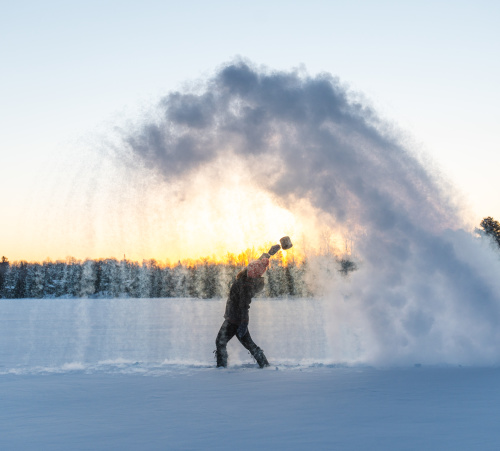Tips for spring and summer tent camping from experienced local guides
 Camping is a timeless pastime that has inspired generations of outdoor enthusiasts, but it also appeals to those wanting to get away from the hustle of life. Though wilderness camping may be easy and accessible to some, others get overwhelmed by the idea of venturing outdoors. The Superior National Forest offers a variety of ways to camp and there are endless resources to make it a reality for anyone. Established in 1909, the boreal forest consists of three million acres of some of the most pristine and natural land in the country. Rich with cultural history, people are invited to paddle the same glacial lakes and hike the same trails as those who did centuries before. More than one million acres of the forest is the Boundary Waters Canoe Area Wilderness (BWCAW), a popular bucket list destination. Thriving pines, spruces, and fir trees house over 200 different bird species (birders rejoice!). Also found are wildlife including moose, deer, gray wolf, Canada lynx, and black bear. People come from all over the world to adventure in the Forest’s numerous campgrounds and remote campsites.
Camping is a timeless pastime that has inspired generations of outdoor enthusiasts, but it also appeals to those wanting to get away from the hustle of life. Though wilderness camping may be easy and accessible to some, others get overwhelmed by the idea of venturing outdoors. The Superior National Forest offers a variety of ways to camp and there are endless resources to make it a reality for anyone. Established in 1909, the boreal forest consists of three million acres of some of the most pristine and natural land in the country. Rich with cultural history, people are invited to paddle the same glacial lakes and hike the same trails as those who did centuries before. More than one million acres of the forest is the Boundary Waters Canoe Area Wilderness (BWCAW), a popular bucket list destination. Thriving pines, spruces, and fir trees house over 200 different bird species (birders rejoice!). Also found are wildlife including moose, deer, gray wolf, Canada lynx, and black bear. People come from all over the world to adventure in the Forest’s numerous campgrounds and remote campsites.
The City of Ely is in the heart of Superior National Forest and is full of helpful resources for those who want to head into the woods. Camping is one of the best ways to experience the wilderness and if you do it outside of the BWCAW, it’s even more accessible as you don’t need to secure a sought-after permit. Planning a trip can be intimidating, so we asked two local guides to inspire you and provide tips, to make it a little easier. We also discussed the barriers that may stop people from camping and how valuable places like the Superior National Forest are to this world.
Christina Forsythe has been guiding in the area since 2005 when she got her start taking people out on local dogsled trips. She likes to say that she read too much Jack London which then pushed her to guide summer camping trips. Tim Barton has been adventuring on the Superior National Forest–especially the BWCAW–his entire life and officially started guiding camping trips in 2013.
Planning and Preparation
When it comes to camping on the Superior National Forest, both guides agreed that preparation and planning are extremely important. Part of this may include using resources available and finding the balance between too much and not enough. Christina talked about the varying elements, “There are times that summer and winter might not be comfortable. It’s important to know the difference between This is hard but I’m okay and This is dangerous and I’m not okay.” Know your capabilities. “If you are an ambitious person, you may make a route that is super long and hard. If that feels like it is taking away from your experience of being present in the wilderness, you have to be okay with cutting it down. What does it look like for you to be fully present while you are here?”
Tim added, “Know where you are going. Speak with people who have done it before. Checking the weather is important, then packing appropriately for said weather. A poncho is not going to cut it here, you need good rain gear, you need the right kind of footwear and if you are in those shoulder seasons you need layers. You have to make sure you are staying warm and comfortable out there.”

Photo: @elyoutfittingcompany
Christina added, “Lightweight, long sleeve outfits in the summer are key to bug prevention.”
Proper Gear and Utilizing Outfitters
Lacking the proper gear can prevent people from going camping. This is where the area outfitters are helpful because they have most items available to rent. They also provide handy checklists of what to bring.
“If you’re feeling intimidated about going into the woods, talk to someone. Have them walk you through it because this place is for everybody, and they can find a way to make it work for anybody,” said Christina. When it comes to investing in camping gear, you don’t necessarily have to spend big bucks on everything. Make your money count. Christina highly recommended spending money on your sleep system. She said a proper sleeping pad and a sleeping bag that fits your body can be the difference between being warm enough or getting too chilled at night.
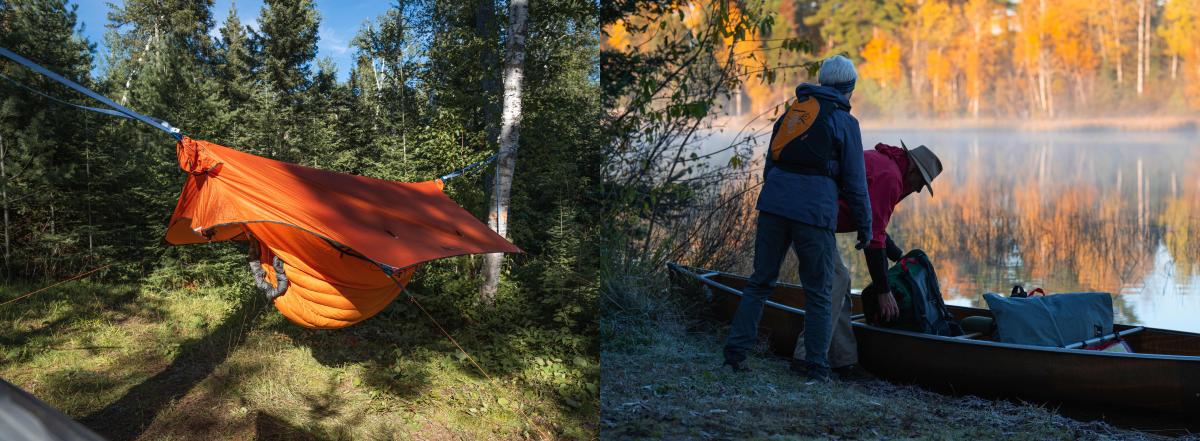
Tim also spoke about planning for the elements. “I do think rain gear and your clothing is really important. A good tarp and tent, things that can protect you from the elements are huge but if you go out with subpar rain gear and bad shoes and you get blisters on your feet or get cold, there’s very little you can do. A nice tent or backpack won’t make a difference if you don’t have the right clothing for it.” He added how important it is to lay out what gear you have. “Know the gear you have, know what kind of shape it’s in. Make sure the first time you set your tent up or use your stove is not in the woods. Take advantage of online resources, Paddle Planner or BWCA.com, or just call an outfitter.”
The Food
Smores, trail mix, and chocolate may be popular camping foods, but meals don’t necessarily have to be as quick. Packing the appropriate amount of food is important but keep in mind, depending on where you are camping, you may be carrying it on your back. Also, the pack it in pack it out rule exists in all wild places (where trashcans aren’t provided) so keep that in mind and reduce the amount of waste you have. Burning leftovers and trash is prohibited as it attracts critters and bears which can cause problems for other campers. Bringing bear-proof containers or a food hanging kit is highly recommended. When asked about their favorite camping food, Christina and Tim were happy to discuss it.
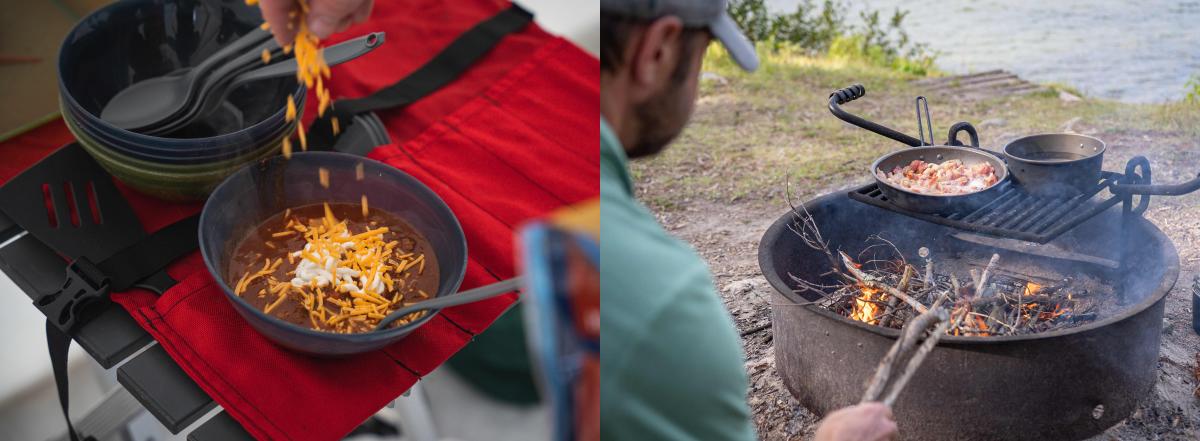
Christina laughingly responded, “Anything you don’t need a fork for. Burritos. Self-contained foods, my friend always calls them. A tortilla with pouch chicken, black beans, and cheese is amazing. Quesadillas also taste so good on the trail. Calories are more appealing when you are camping, what really satiates you?
Tim also said calories are key. “Breakfast food. I’m a big fan of breakfast burritos, pork sausage and eggs, cheese, and tortillas, cooked over the fire. But you can’t go wrong with chili either, you just freeze it before you go out. I’ve made taco meat before going out, I’ve pre-cut fajitas, and that kind of stuff can be good too.”
Favorite Thing About Camping and Why the Superior National Forest is Special
The Superior National Forest has five types of camping opportunities: Fee Campgrounds, Rustic Campgrounds, Backcountry Campsites, Dispersed Camping, and Wilderness Camping in the BWCAW. With this variety, anyone can find something that suits them. The Forest ranges from the shores of Lake Superior, up the Arrowhead region of Minnesota and into Voyageurs National Park. With more than 2,000 lakes and rivers and 445,000 acres of surface water, the Sawtooth Mountains, BWCAW, Misquah Hills, Eagle Mountain, and the Laurentian Divide—there’s so much to experience!
Christina said, “One of the benefits of the Superior National Forest is the paddling opportunities for larger groups or if you are newer to camping and feeling intimidated by the Wilderness that is the Boundary Waters, Superior National Forest is a great option. The serenity and inner workings of this place are incredible.”
Tim loves how vast the Northwoods is, “Millions of acres of uninterrupted wilderness, there’s very few places like this left in the world.”
If you’re new to camping, start at a developed campground with running water and outhouses. Later you can further develop your skills by hiking or canoeing to a dispersed campsite just outside the BWCAW. Here you can practice boiling or filtering water to drink and abiding by the Leave No Trace guidelines. These acquired skills and the proper gear will prepare you for remote camping in the Boundary Waters Canoe Area Wilderness.
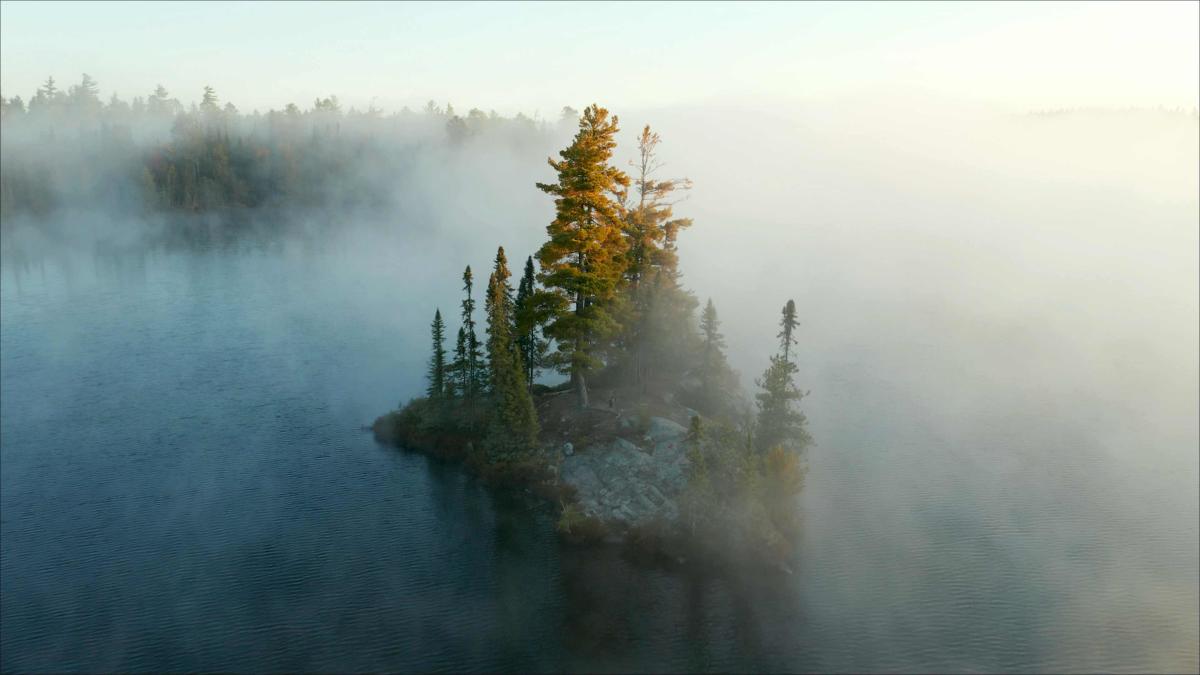
When asked about their favorite things about camping both discussed peace and seclusion.
Christina talked about the night and its vast sky. “Traveling is wonderful, and you get to see new things but getting up at night, seeing the stars, you realize you are truly in the wilderness. It’s wild to think that you and your group could be the only ones within a 10-mile radius. You don’t get that in a lot of places anymore.” She went on to talk about the importance of mental health and how camping helps with that, “I’m not able to be present as much as I would like to be and if we aren’t present, we aren’t experiencing life to its fullest. Stepping away from my phone, which unfortunately has become an addiction for many of us, really helps me reset and refocus on life. And I find that with my clients too. More and more you see them struggle on that first day but then be almost relieved when they realize they have the freedom to not have it.”

Tim answered, “Believe it or not, the quiet. I sleep better in the woods than I sleep anywhere else, and I always have. You’re tuned out and working hard. There is something about the peace of lapping waves on rocks and wind blowing through trees.” Tim also included fond memories of trips he has guided. “I’ve had many great trips. I took a group out who all met in the American embassy in China. I’ve guided folks from India, Argentina, China, and France and then the group from Lake Vermillion. It was one of the group members’ turn to pick a vacation and so these six ladies all came in and did a trip with me. We spent three beautiful days on the Kawishiwi River. You know, I poured their wine, and they did Tai Chi on the rocks, and it was amazing! I really enjoyed those folks, but every group gives you something different and something more to experience. You learn just as much from them usually.”
They both shared their favorite backcountry campsites.
Christina chose, “Ojibway Lake and Bass Lake. I love Bass Lake.
Tim said, “A lake called Grassy Lake. It connects to Fenske and Tee Lakes. It is one of those places I went to with my dad as a kid.”
Superior National Forest for All
We talked about the barriers that might prevent someone from camping and the historical exclusion of certain groups of people–BIPOC, LGBTQ+, and Women.
Christina mentioned the varying factors that might make it harder for some but said that didn’t stop many people she’s guided, including a man who had lost both his legs and a woman with a chronic illness. “A big barrier is that people sometimes don’t think they can do it, so they don’t reach out to outfitters to ask for help.” With March being Women’s History Month, Christina discussed how outdoor guiding was typically a male-dominated field. “When I started in 2005, I found winter work immediately, but summer was so hard to break into because the people that were coming up were mainly groups of men. But there has been a huge shift in women doing trips—especially women in their sixties—leading to a huge demand for female guides. There is a group for you if you are worried about accessibility. Ely has a certain flexibility to it.”
Tim added, “You see many diverse groups of people coming up which is proof that this place is for everyone.” He also talked about various entities working with organizations, like The Boys and Girls Club and Big City Mountaineers, to bring up kids and other people who might not get the opportunity to experience a place like Superior National Forest.

Left: @elyoutfittingcompany | Right: @girlof10000lakes
Local outfitting company owner and guide Jason Zabokrtsky created a paddle trip exclusively for Queer-identifying participants. We asked Jason why he feels trips like this are important.
“Historically, members of the Queer community haven't found rural areas to be the most welcoming and safe spaces to express their true identities. It's important to be intentionally welcoming to the LGBTQ+ community, remove barriers to enjoyment of the Wilderness, and let everyone know that the Wilderness accepts them as they are, and we do too.”
You’re Invited to Camp on the Superior National Forest
From the variety of plants and trees to the rich world of microbes in its soil, we are reminded that diversity is everywhere in nature and thus is a place where all are welcome. Everyone should have access to wild spaces without barriers. The key takeaway from both guides is preparation and utilizing the resources available. Wilderness camping can have a learning curve but with planning, those curves don’t have to be drastic. If it is something you want to do, there are opportunities to make it happen. Since the beginning, humans have connected with nature in ways that helped both thrive. In today’s world, it’s becoming more important to tune out the noise and focus on the peace and beauty that exists. Maintaining accessibility in places like the Superior National Forest not only helps visitors but it helps create more nature advocates who appreciate all that the wilderness has to offer. People protect what they know, and future generations benefit. So go camping and experience the wonders of being outdoors!
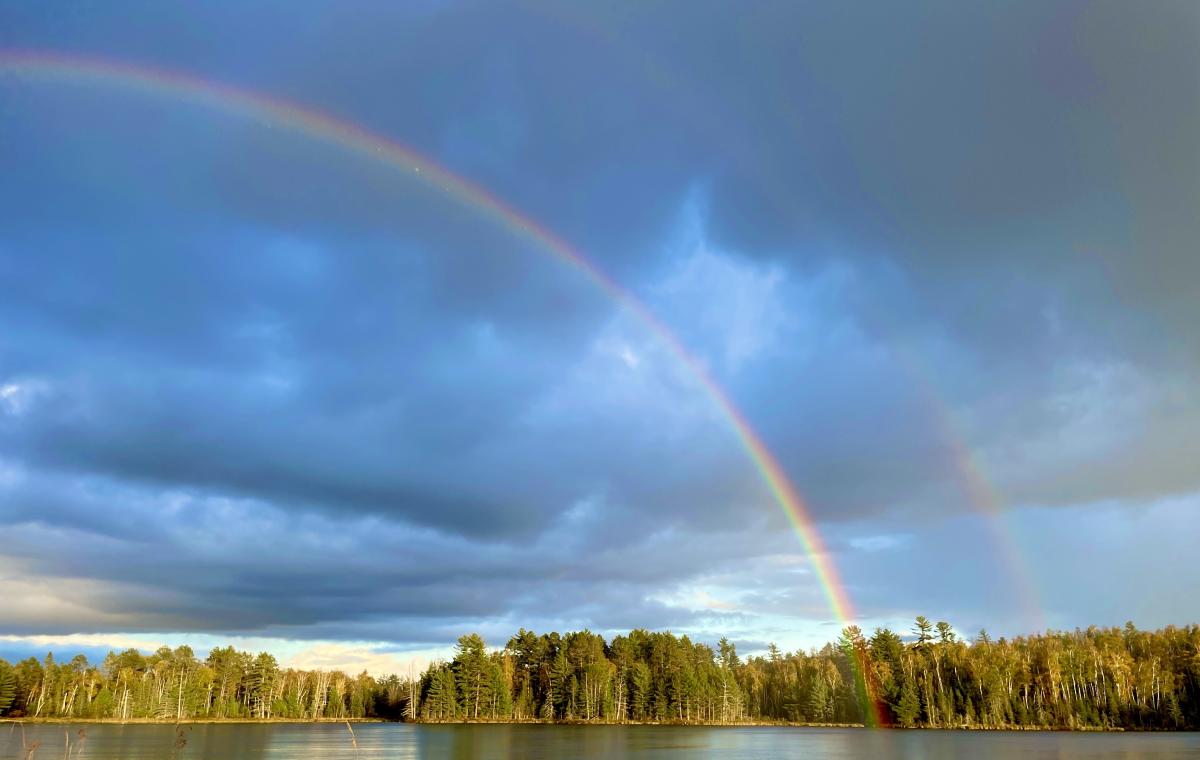 Special thanks to local guides Jason Zabokrtsky, Christina Forsythe, and Tim Barton for contributing to this post!
Special thanks to local guides Jason Zabokrtsky, Christina Forsythe, and Tim Barton for contributing to this post!
Resources:
Superior National Forest - Camping & Cabins (usda.gov)
BWCA, Boundary Waters, Canoe, Quetico
Paddle Planner
Camping In Minnesota: BWCA, Boundary Waters, Ely, MN
